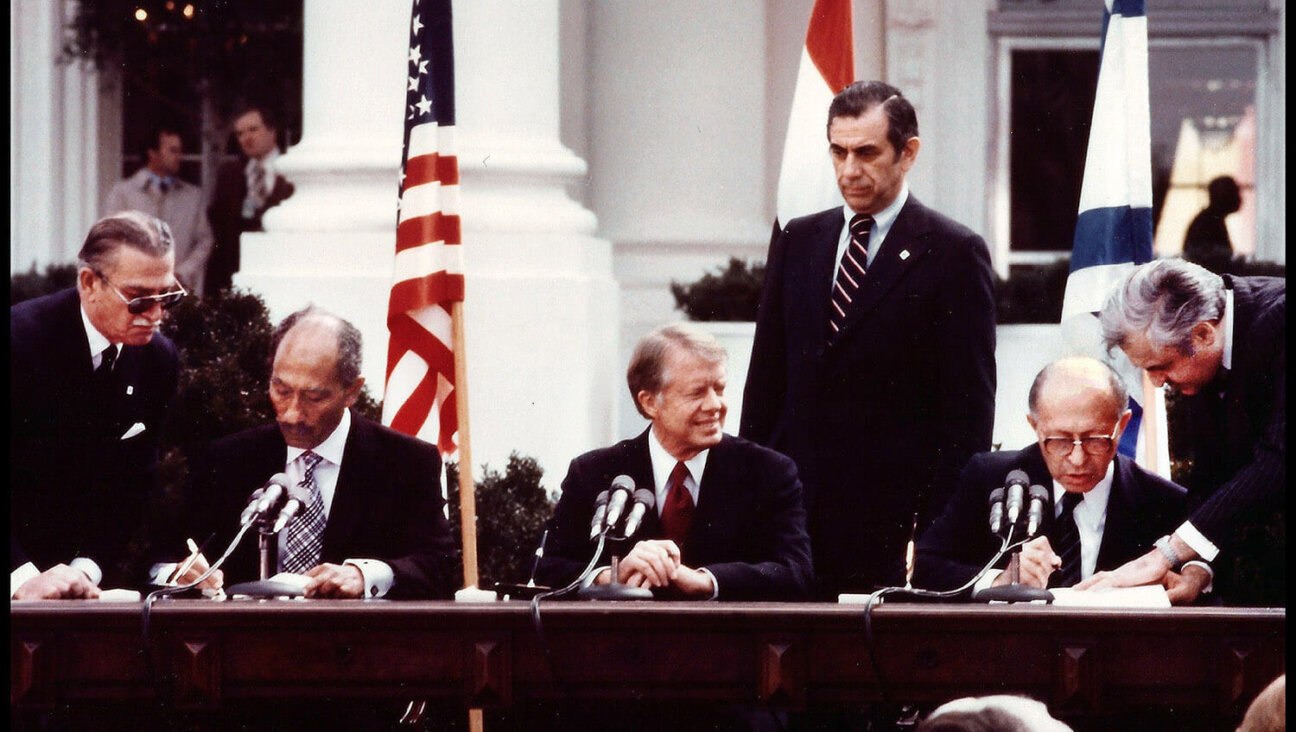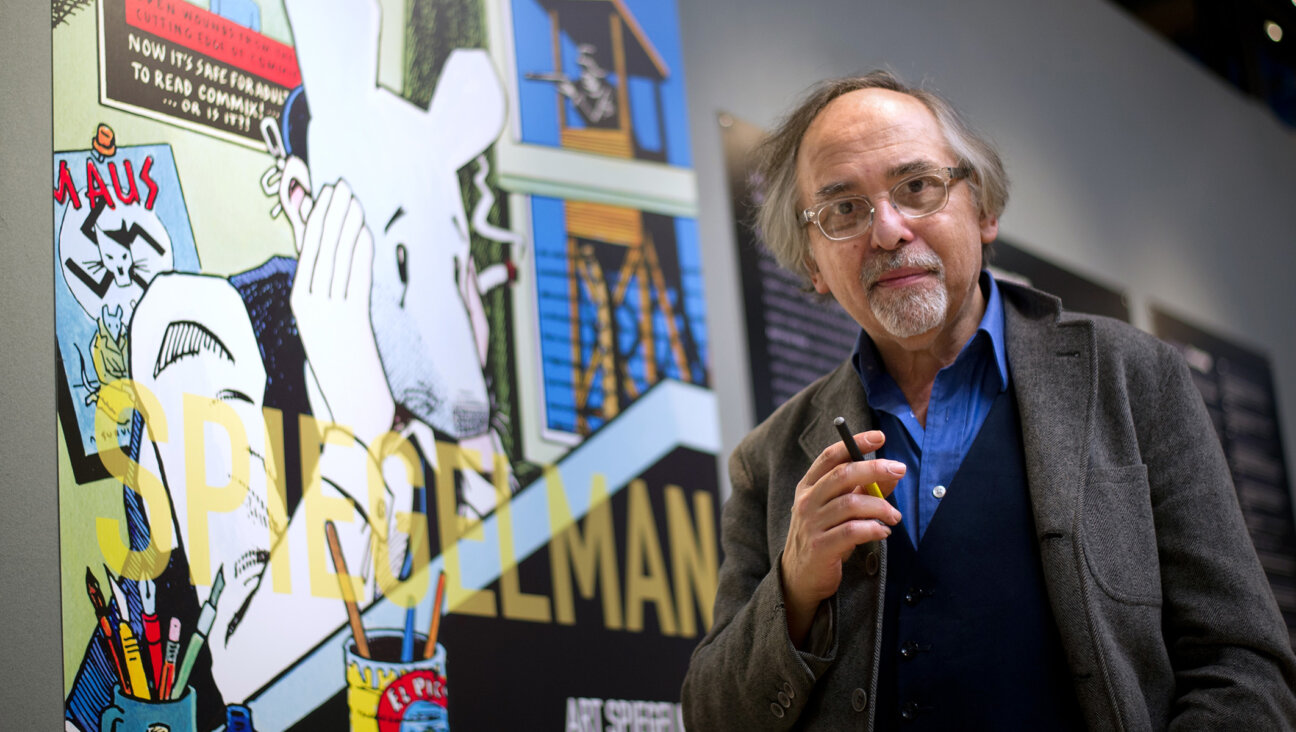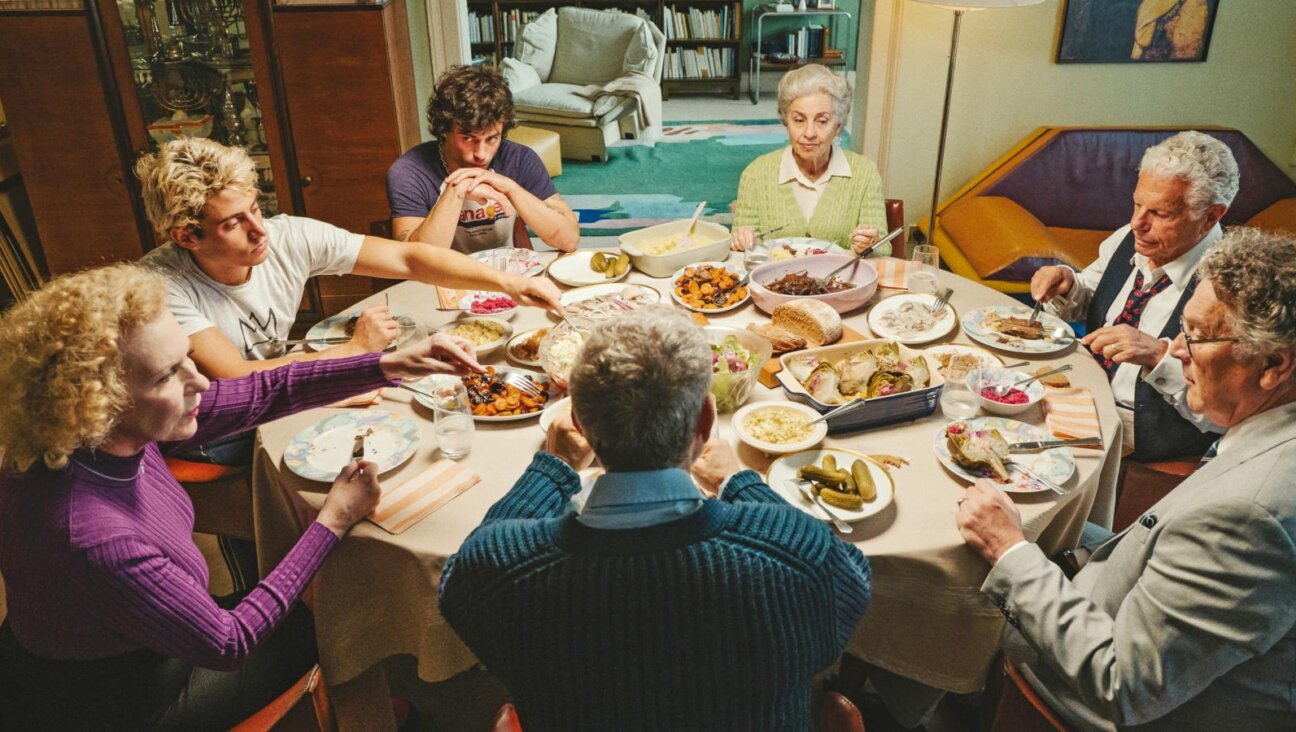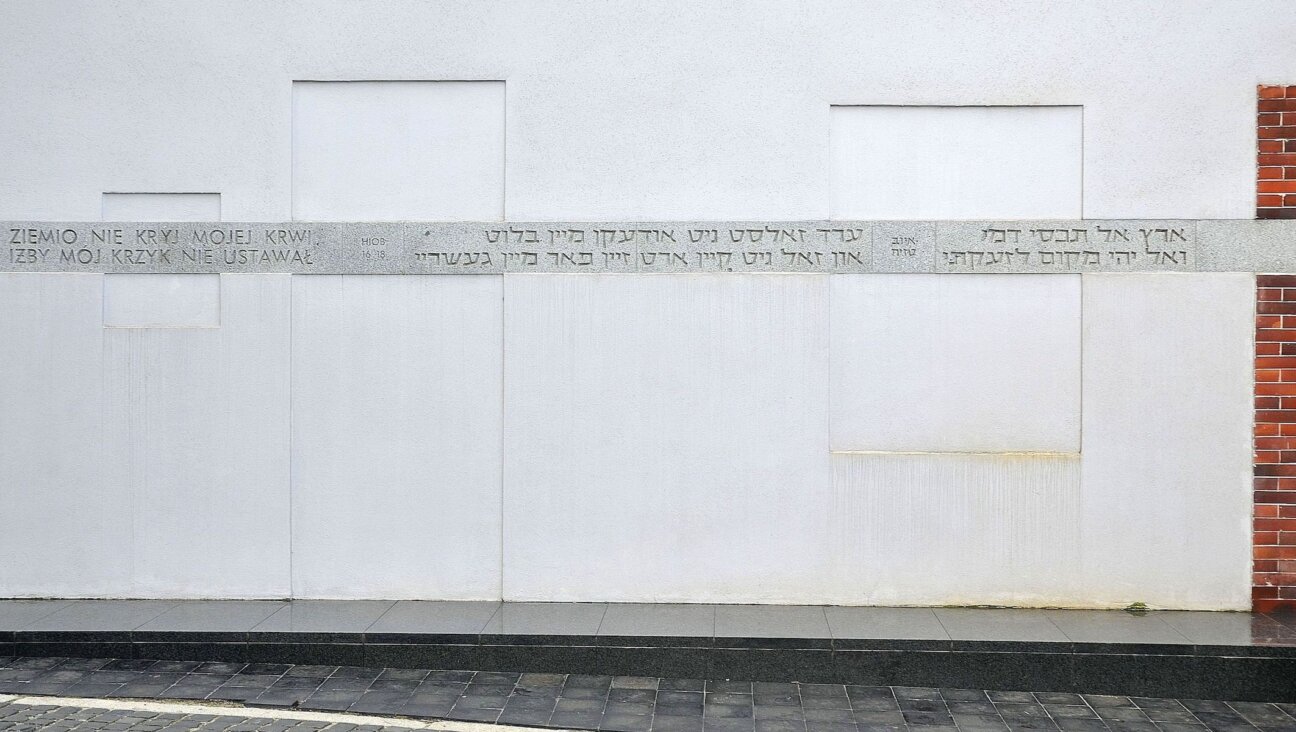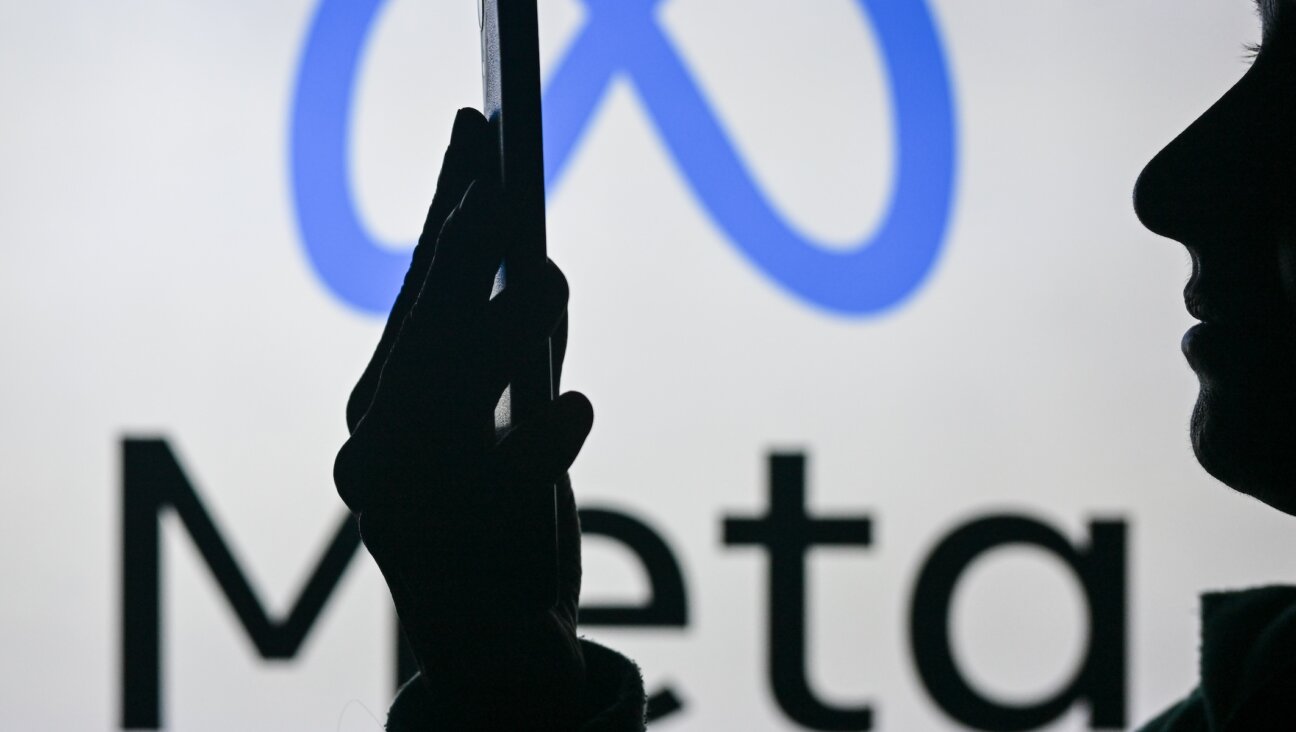Renewing Ecstatic Spirituality to the Beat of a Drum
“As opposed to the dense and demanding discourse of scholarship, students crave instant gratification,” complained outgoing Jewish Theological Seminary Chancellor Ismar Schorsch in his fiery farewell address last May. “The way to the heart is not through the circuitous and arduous route of the mind but the rhythmic beat of the drums.”
Although framed in the context of a contemporary debate, the chancellor’s complaint was part of a very old debate in Judaism, extending far beyond percussion to the fundamental question of what Jewish spirituality will look like in the coming decades. For Schorsch, long a champion of the academic, “scientific” study of Judaism, scholarship ought to be the primary mode of Jewish spiritual life. Yet, he complained, it is losing ground to nonintellectual, emotional forms. Is Schorsch right? Is critical scholarship losing ground to emotive, ecstatic spirituality? And is that good or bad for the Jews?
Although there are no reliable statistics on the subject, Schorsch does seem to be right anecdotally that drums, music and the other accoutrements of ecstatic spiritual practice have gained increasing prominence in Jewish ritual and communal life, not just on the fringes but also in the mainstream. Across denominations, synagogues large and small increasingly include drum circles, music or percussion at services, and a far greater amount of clapping and niggunim (wordless melodies) within their menu of spiritual offerings. Even proper, starchy congregations feature a Shlomo Carlebach melody or two.
Normatively, of course, it’s a matter of opinion. I asked Shoshana Jedwab, a Yeshiva University-trained teacher at the Abraham Joshua Heschel School who facilitates drum circles in New York City at the JCC of Manhattan and at Congregation B’nai Jeshurun, what she thought of Schorsch’s assessment.
“You bet the way to the heart is through the rhythmic beat of the drum!” said Jedwab, who grew up Orthodox and was a student at Yeshiva University’s Revel Graduate School for many years. “And I’ve always learned that our rabbinic tradition knows and celebrates that.” Jedwab, citing a Midrash that calls Miriam’s drums “the tools of faith and joy,” called drumming a “way that the heart can come out in positive and connecting ways.”
Brent Spodek, a fifth-year JTS rabbinical student who also works at Bnai Jeshurun as the Marshall T. Meyer rabbinic fellow, said that Schorsch’s comments were not incorrect so much as they were incomplete. “The question is, what are the legitimate pathways of religious experience?” Spodek said. “Intellectual study can be a religious experience. The problem is that there is a perspective that can only see that way, and can’t appreciate the nonintellectual, emotive approach.”
Authentic prayer, Spodek added, requires an emotional, not just an intellectual, component. “To really daven, you can’t be aloof. You have get into it. And I’ve been in situations where drumming has allowed me to do that.”
Elie Kaunfer, another fifth-year JTS rabbinical student and a founder of New York’s Kehilat Hadar congregation, agreed with Spodek that intellectual study and ecstatic prayer need not preclude each other. “You can integrate the heart and the head. Look at the model of the traditional Sabbath morning service, which includes both prayer and Torah study,” Kaunfer said. “I go to shul on Shabbat morning wanting to have some version of an ecstatic davening experience, and also wanting to activate my intellect around issues of Torah study.”
Kehilat Hadar does not use drums in its services, Kaunfer said, not for spiritual reasons but for legal ones: There is a dispute among rabbinic authorities as to whether drums are “tunable instruments,” which may not be played on the Sabbath.
The question about drumming echoes a much older Jewish debate: whether prayer or study is the primary means to serve the Divine. This debate raged throughout the Talmud and medieval Judaism, but reached a fever pitch at the turn of the 19th century when it divided the ecstatic, prayer-oriented Hasidim and their opponents, the scholastic, study-oriented Mitnagdim. Though America’s Conservative movement is, historically, a descendant of the German Reform movement, it shares with the Mitnagdim a deep suspicion of the drumming, music and singing that are still commonplace in Hasidic (and neo-Hasidic) circles. For them, as for Schorsch, the “rhythmic beat of the drum” led to both a denigration of the more refined arts of scholarship and to an unseemly, undignified religious enthusiasm.
Certainly, within the Jewish tradition, there is ample support for each side — sometimes from the same source. For example, Maimonides, in the Mishneh Torah, writes that “[p]rophecy does not come from sadness or sloth, but from joy. Therefore the prophets had before them harp, drum, flute, and lyre so they could seek prophecy.” Yet Maimonides also praises the rational efforts of the philosophers, which requires not prophetic joy but intellectual refinement.
Today the debate is even more acute in the Christian community than in the Jewish one. Which is the appropriate way to serve God — by rationally reflecting on one’s ethical duties, as do most mainline Protestant denominations, or by being “swept up by the Holy Spirit” like the evangelicals, dancing and speaking in tongues? In America at least, enthusiasm has been winning the day — perhaps not at the expense of ethics but by complementing it.
Is the trend toward enthusiasm simply a matter of taste? Some like their prayers hot, so to speak, and others don’t?
No, says Rabbi David Ingber, founder of New York’s Kehilat Romemu congregation: The ecstatic is irreplaceable. “In traditional Judaism, you have to actually live the values and the lifestyle that you learn about, and that requires letting the words into your heart.… The mind informs, but the heart transforms.”
That, Ingber says, requires a different “technology set” from intellectual study. “Just as we rigorously demand that people learn a set of skills to crack open the text,” said Ingber, who studied for many years in Orthodox and ultra-Orthodox yeshivas but was ordained independently, “we should demand they learn skills to crack open the heart.”
Of course, one reason that the “rhythmic beat of the drum” is popular today is that it doesn’t have any prerequisites. And as the Jewish literacy level of contemporary Jews continues to drop, singing and drumming make Jewish ritual much more accessible than verbose, if beautiful, written prayers. Maybe it’s just the easy way out.
In Spodek’s view, the opposite is the case: The more you know what you’re actually saying, the more challenging verbal prayer becomes. Indeed, he argued, the “rhythmic beat of the drum” is not an abandonment of intellectual curiosity but a consequence of it.
To be sure, enthusiasm can be dangerous; some of the worst violence in recent history has been committed by people believing that God spoke to them directly. But then again, atheists, too (Stalin, Mao and Pol Pot), have committed plenty of violence. Is ecstasy Miriam’s dance at the Red Sea, or the paganism of the golden calf? Is it the essence of Sinai, with its trumpets, fire and noise — or its antithesis?
Perhaps what Schorsch and his opponents are debating is nothing less than what religion is supposed to do, in the context of a well-balanced life — educate intellectually or inspire emotionally, rein in our unruly passions or tap into them for the sake of transformation.This tension, between restraint and celebration, controlling and exciting, has been with our people since Sinai — literally. Perhaps one must, in the end, make a choice — and perhaps the choice itself is an important religious decision.
Or maybe, as the Yeshiva-educated drum-circle leader Jedwab put it, “having ecstatic tools does not negate having critical tools, and having both makes your life richer. It’s definitely louder.”
Jay Michaelson is the author of the recently published “God in Your Body: Kabbalah, Mindfulness and Embodied Spiritual Practice” (Jewish Lights Publishing).
A message from our Publisher & CEO Rachel Fishman Feddersen

I hope you appreciated this article. Before you go, I’d like to ask you to please support the Forward’s award-winning, nonprofit journalism so that we can be prepared for whatever news 2025 brings.
At a time when other newsrooms are closing or cutting back, the Forward has removed its paywall and invested additional resources to report on the ground from Israel and around the U.S. on the impact of the war, rising antisemitism and polarized discourse.
Readers like you make it all possible. Support our work by becoming a Forward Member and connect with our journalism and your community.
— Rachel Fishman Feddersen, Publisher and CEO











